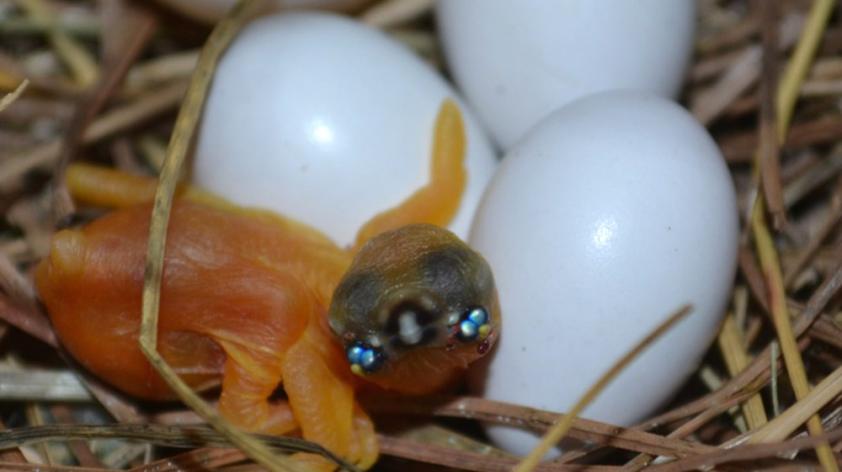
Spot On!
Brightly colored mouth nodes help a Gouldian finch chick get spotted by its parents.
It’s baby bird season! A lot of our collection birds are sitting on eggs, feeding tiny chicks, and teaching their young fledglings how to make that final leap and learn to fly. As a senior associate in the Wildlife Disease Labs, I examine a lot of different species of baby birds. Some have really cool adaptations to life as a tiny chick in a dark nest! Gouldian finches win the prize for the most colorful chick beaks. This species nests in the hollows of trees, keeping their chicks safe in the darkness. Pearlescent white and blue nodes on the each side of the chick’s mouth shimmer in the low light of the nest, creating an easy marker for the parents to spot. Gouldian finch chicks tend not to make any noise; they simply open their mouth, turning their head gently side to side, and the glimmer attracts the parents’ attention. They may be tiny, less than an inch tall at hatch, but it’s easy to spot the Gouldian finch chick spots!
It would be hard for a coua parent to not spot this plea for food!
The Northern crested coua has white circles on the inside of its mouth that look like targets to help the parent birds find the chick in the nest. These distinctive marks alert the parents that the chick is hungry and begging for food. Other chicks, like the common waxbill and paradise whydah, have similar black swirls and spots on the inside of their mouths. It turns out paradise whydahs will often lay their eggs in a common waxbill nest (free babysitting!), and when the chicks hatch the waxbill parents are unable to tell the difference between waxbill and whydah chicks. Waxbills will feed all of the chicks in their nest, even if the waxbill female hasn’t laid an egg of its own! What other spots have you spotted around the Zoo or Safari Park recently?













